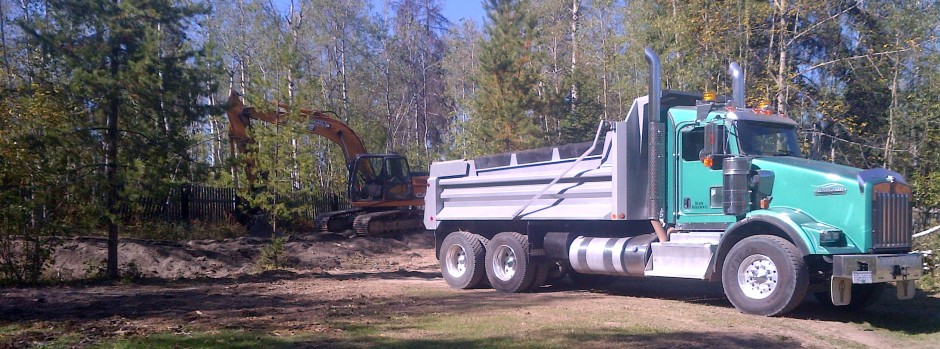 Conventional gravity Septic Fields require adequate treatment soils, and vertical separation from water tables, restrictive soils, or rock.
Conventional gravity Septic Fields require adequate treatment soils, and vertical separation from water tables, restrictive soils, or rock.
These types of wastewater treatment systems were the mainstay of the industry for many years, but time and research have revealed that these types of Septic Systems often provided less than ideal levels of treatment.
A typical gravity field was often comprised of a septic tank, followed by a distribution box, and a drain field or leech field built with perforated sewer pipe and drain rock.
These types of septic systems require good design,soils, and careful installation to perform properly. They were often referred to as “Disposal Systems”, and while they may have achieved that purpose, they certainly could be improved upon.
Following the change in regulations that occurred in British Columbia in May of 2005, far fewer sites qualify for this type of septic system. The new Sewerage System Regulation (SSR) and Standard Practice Manual (SPM) recognized the need for improved wastewater treatment and dispersal.
While new technologies are able to improve on some performance aspects of these systems, the optimum soils required to ensure proper treatment of the wastewater prior to dispersal are simply not present on many sites.
The result of the change in practise is that far fewer gravity septic systems are being designed and installed that in previous years.
Current regulations require deeper levels of well-drained, fine-grained soils be present in the area where the septic field is installed, and that these areas also contain far fewer amounts of course fragments (gravels), and more vertical separation between the infiltration area and any ground water that may be present.
While this means that some sites can require more advanced types of septic systems, these changes also ensure that drinking water sources are protected while population densities increase in areas not serviced by centralized waste water treatment.
The first step in determining if a potential building site has soils and conditions conducive to a gravity septic system is to contact an ROWP and have the site assessed. This assessment should include test pits to log the soils present in the proposed area where the septic system is to be located, and percolation or permeameter tests to determine the soils ability to accept water.
Setbacks to any potential wells both on the subject property and that of those adjacent to it should also be checked to ensure compliance with the regulatory framework.
NOTE; A word of caution here should be made in regards to protecting the potential site.
Many sites with marginal soils can be destroyed during clearing operations. This can result in much higher costs to develop a site, and in some cases can result in the loss of the only suitable site available on the lot.
It is advisable to have the site assessment done prior to having any development proceed on the property. This can save considerable time and money on your project, and often is the best investment you can make as you plan the development of your site.
Please feel free to contact us for a free site visit and initial consultation regarding the potential of any site for a decentralized septic system.
